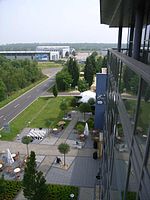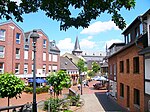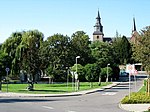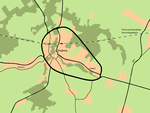RAF Wildenrath
Airports in North Rhine-WestphaliaDefunct airports in GermanyMilitary airbases established in 1952Military installations closed in 1992Royal Air Force stations in Germany ... and 1 more
Use British English from October 2017

Royal Air Force Wildenrath, commonly known as RAF Wildenrath, was a Royal Air Force (RAF) military airbase near Wildenrath in North Rhine-Westphalia, Germany, that operated from 1952 to 1992. Wildenrath was the first of four 'clutch' stations built for the RAF in Germany during the early 1950s.
Excerpt from the Wikipedia article RAF Wildenrath (License: CC BY-SA 3.0, Authors, Images).RAF Wildenrath
Friedrich-List-Allee,
Geographical coordinates (GPS) Address Nearby Places Show on map
Geographical coordinates (GPS)
| Latitude | Longitude |
|---|---|
| N 51.114444444444 ° | E 6.2216666666667 ° |
Address
Galileo-Pseudolite Reference Station WREF
Friedrich-List-Allee
41844
North Rhine-Westphalia, Germany
Open on Google Maps










